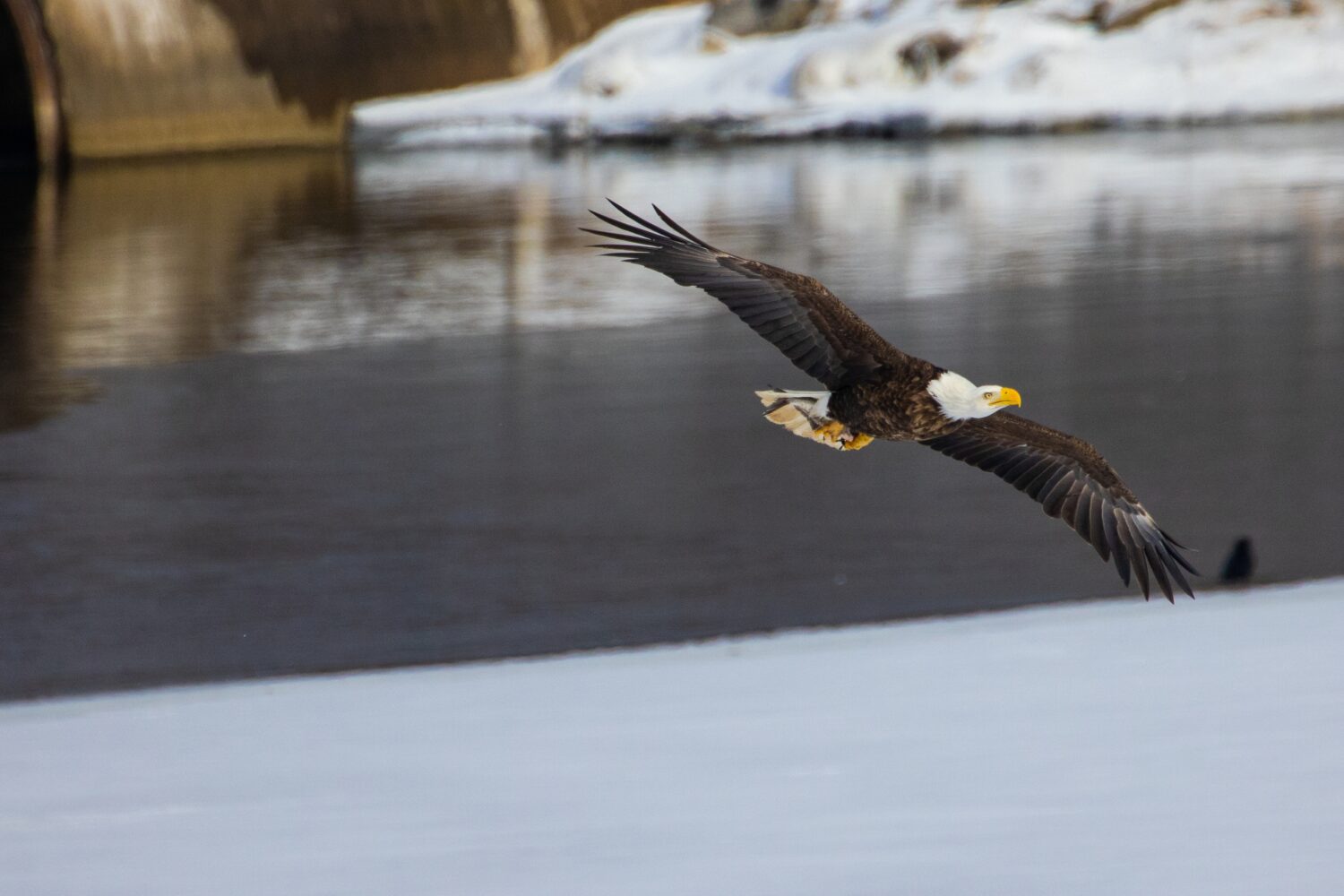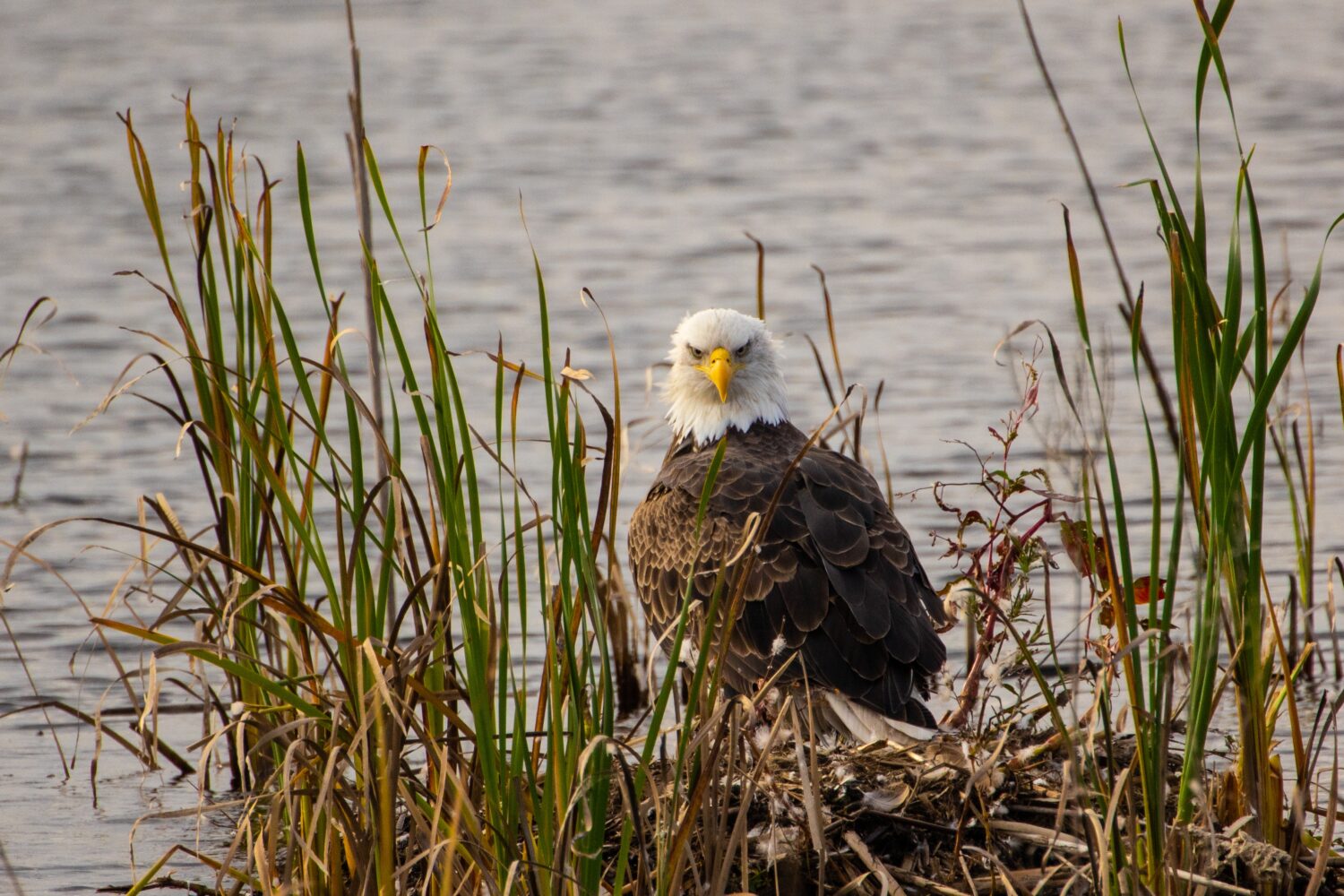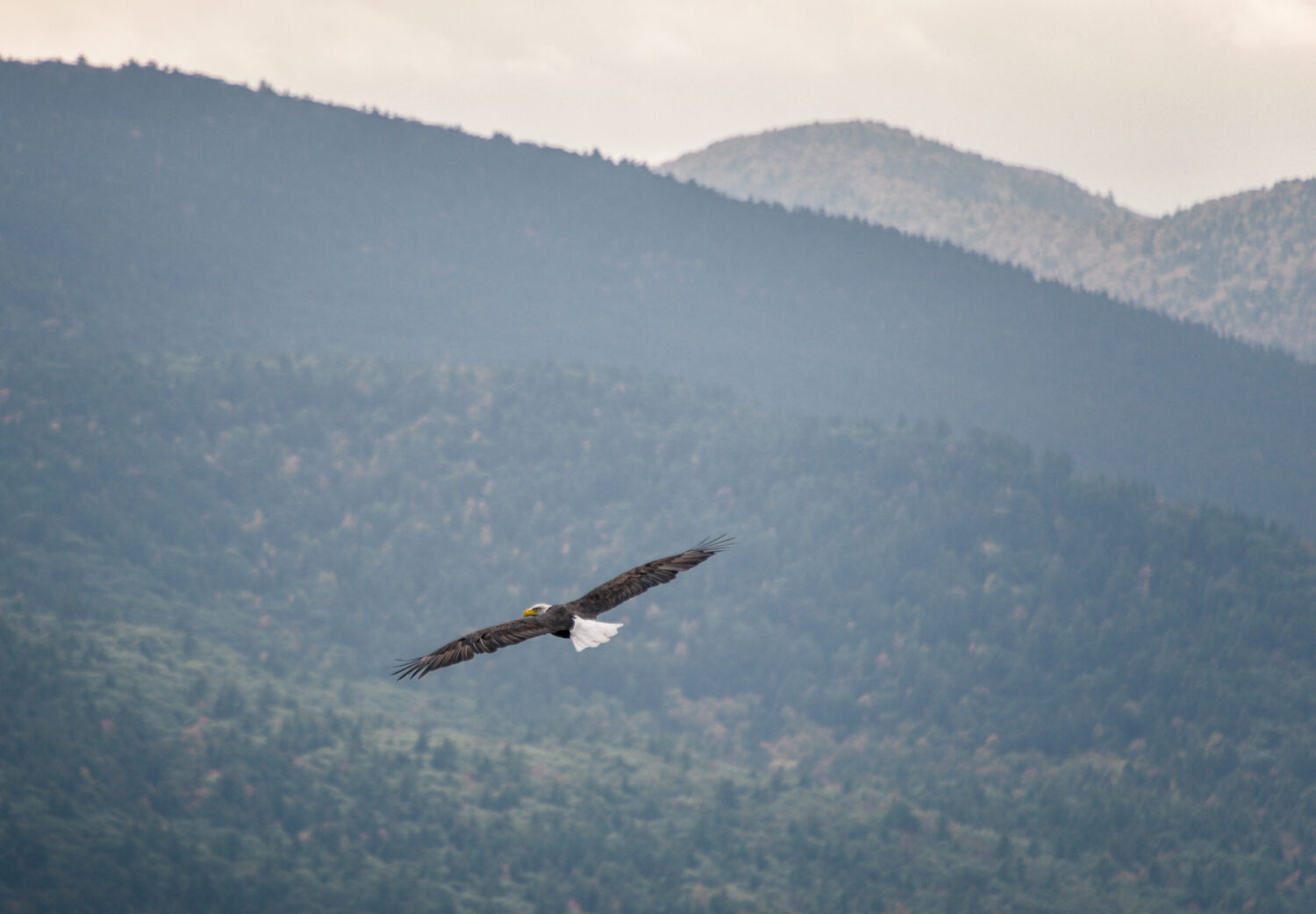The 6 Best Places and Times to See Bald Eagles in New York
Seeing a bald eagle (Haliaeetus leucocephalus) soar across the sky is a thrilling sight. Long before this majestic bird became the national emblem of the United States in 1782, it held a place of honor and great significance to Native Americans. If you’re in New York, where are the best locales to see them?
These large birds of prey seek out nesting spots near water. Their nests are huge and may only contain one egg that will be incubated for just over a month. Once on the verge of extinction, the bald eagle population has made an amazing rebound.
The optimal time of year to spot them in New York State is during the winter. Bald eagles start arriving at their winter digs in the state during December. You’ll find their numbers peaking in January and February.
According to the New York State Department of Environmental Conservation, eagles are most active in the morning, from 7 to 9 a.m., and again in the early evening from 4 to 5 p.m.
These six areas in New York State are excellent viewing locations that may allow you to see for yourself just how impressive and formidable these birds are.
1. Onondaga Lake

©Wirestock Creators/Shutterstock.com
Onondaga Lake, located near the city of Syracuse, was once among the most polluted lakes in the U.S. However, it has made a significant comeback— just like the bald eagle itself.
With a long history of being the dumping ground for untreated sewage and industrial waste, Onondaga Lake was deemed unsafe to swim in going back to 1940. Despite major efforts to clean it up, mercury and PCB contamination make eating fish from the lake a risky proposition.
Eagles, of course, abide by no such restrictions. Foraging for food is difficult during the winter, and eagles will gather where it’s plentiful, mercury contamination or not.
Bald eagles are long-distance travelers and arrive at Onondaga Lake during December and typically stay until mid-March.
You may see a lot of young birds at the lake, along with some adults. (Bald eagles don’t develop their recognizable white heads until they are five years old.)
Onondaga Lake is the biggest winter roosting site for eagles in the state. In just one day over 100 have been counted perched along its shores.
2. Mongaup Valley Wildlife Management Area

©Harry Collins Photography/Shutterstock.com
Comprising more than 11,000 acres, this conservation area is forested and rocky, containing all the necessary streams and rivers bald eagles seek out in a winter habitat.
Located 75 miles north of and a world away from New York City, the management area covers four towns in Sullivan County. In the town of Forestburgh, the state maintains two viewing blinds for observation and photography. A blind is a camouflage of sorts that enables you to get closer to wildlife. Here, it’s an open shed with numerous “windows” overlooking the Rio Reservoir.
A map and GPS coordinates for eagle observation in the Delaware Highlands area can be found here.
The eagle observation area in Barryville is another excellent location to view eagles along the Delaware River. Sitting just off Route 97, the observation area offers a blind and free parking and is handicapped accessible.
On the Pennsylvania side of the Delaware River in Lackawaxen, the Delaware Highlands Conservancy offers Eagle Watch bus tours starting in January. The tour enables visitors to scout for eagles along the river’s upper basin in a heated bus.
3. Montezuma National Wildlife Refuge

©Wirestock Creators/Shutterstock.com
Located in the Finger Lakes region at Seneca Falls, the Montezuma National Wildlife Refuge covers over 10,000 acres. Managed by the United States Fish and Wildlife Service, it played an important role in reintroducing bald eagles to the area. The best place to start your exploration of the refuge is the visitors center off U.S. Route 20 East in Seneca Falls.
In 1976, for the first time a technique called “hacking” was used with eagles to repopulate the refuge. Artificial nesting towers were built, and young captive-hatched eagles were introduced. The plan is that they would make use of these nest areas when they matured.
Hacking for eagles has been successful. They have come back year after year to the locale where they hatched and fledged. The novel plan has also made the wildlife refuge a prime home and an excellent viewing spot for these striking birds.
4. Iroquois National Wildlife Refuge

©Dorothy matula/Shutterstock.com
The state’s largest wildlife haven, the Iroquois Refuge is located in western New York in the hamlet of Basom.
Eagles remain here for the entire year. The best way to see them is simply to scan the skies, rather than attempting to spot a nest. The areas of Cayuga and Ringneck Marsh Overlooks are the best places for eagle-eyed visitors to see a bald eagle in flight.
On Saturdays during the spring the refuge hosts an “Eagle Watch” at the Cayuga Overlook. Visitors of all ages are invited to catch a view of some of the adult bald eagles and eaglets nesting there. An ADA-accessible observation deck is available, as are spotting scopes and advice from experts.
The over 10,000 acres that make up the Iroquois National Wildlife Refuge are part of the Atlantic Flyway. This means that hundreds of bird species use the area, both during migration season and as a habitat.
5. Lake George

©majicphotos/Shutterstock.com
This sizeable lake, located in the southern part of the Adirondack Mountains is just a short trip from Albany. It’s home to many species of birds, bald eagles included.
The fact that bald eagles are once again making the Adirondack region their home base is a big deal. In the 1960s they had disappeared entirely from the area — until the New York State Bald Eagle Restoration Project started working its magic.
In the 1970s the state imported 200 nesting eagles from places where they are prevalent, including Alaska. Due to the “hacking” method of introducing man-made nests, as was done at the Montezuma Refuge, bald eagles made a remarkable return to the area.
The best locations around Lake George to see bald eagles are Anthony’s Nose Preserve, Kitchel Bay, and Speaker Heck Island.
6. St. Lawrence River Region

©RLS Photo/Shutterstock.com
The foremost wintering grounds for bald eagles in New York is the St. Lawrence River area, which forms part of the Canadian border. Around 20 to 30 of these majestic birds winter in this region.
One of the best spots to find bald eagles along the New York side is Wellesley Island State Park. Located in Fineview, the park features three miles of shoreline, many miles of hiking trails, and the Minna Anthony Common Nature Center.
The bald eagle population in this area is increasing every year, both in breeding and wintering. An interesting observation by the experts at the 1000 Islands Land Trust is that the eagles are “acquiring housing from ospreys by force…” — in other words, taking over osprey nests in the region. Where the evicted ospreys may have relocated was not mentioned.
The Bald and Golden Eagle Protection Act
If you plan on visiting a national park or reserve, it’s best to call ahead to the visitor’s center or check online to find the best starting-off locations where eagles may be seen.
As with all wildlife, bald eagles should not be disturbed in any way. This especially includes attempting to urge them to fly for a photo op.
Under the Bald and Golden Eagle Protection Act, anyone who pursues, captures, molests, or disturbs an eagle is subject to criminal penalties. These protections include not only the bird but also its nest, eggs, and feathers. And that’s even if you find a feather on the ground.
Native American tradition holds that the bald eagle is the master of the sky. Should you see one soaring above, appreciate its majesty and strength. And be thankful for the fact that they were able to return to the shores of rivers, lakes, and streams in North America after coming close to disappearing from the skies forever.
The 6 Best Places to See Bald Eagles in New York
| Location | Time of Year |
|---|---|
| Onondaga Lake | December through March |
| Mongaup Valley Wildlife Management Area | January through March |
| Montezuma National Wildlife Refuge | January through March |
| Iroquois National Wildlife Refuge | Throughout the year, with a special “eagle watch” in the spring. |
| Lake George | December through March |
| St. Lawrence River Region | December through March |









